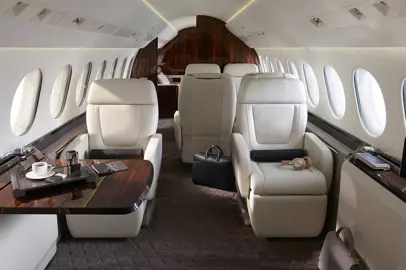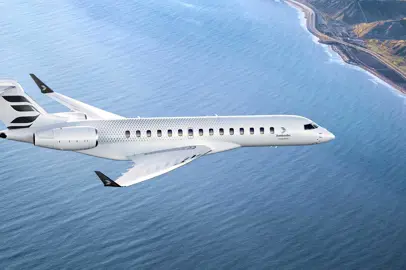Otto Aerospace's Phantom 3500
A new chapter in commercial aviation is being written thanks to Otto Aerospace, a US startup engaged in the development of the Phantom 3500, a next-generation super-midsize jet designed to combine high performance, innovative design and environmental sustainability.
At first glance, the Phantom 3500 stands out for one surprising element: the absence of windows in the cabin. Instead, high-definition screens along the walls display real-time exterior images or customised settings, transforming the cabin into a bespoke space for relaxation, work or entertainment.
Flexjet will be the first operator to introduce the Phantom 3500 to its fleet, in line with the business aviation industry's commitment to achieve carbon neutrality by 2050, in line with the international Climbing Fast initiative. Flexjet has placed an order for 300 Phantom 3500s.
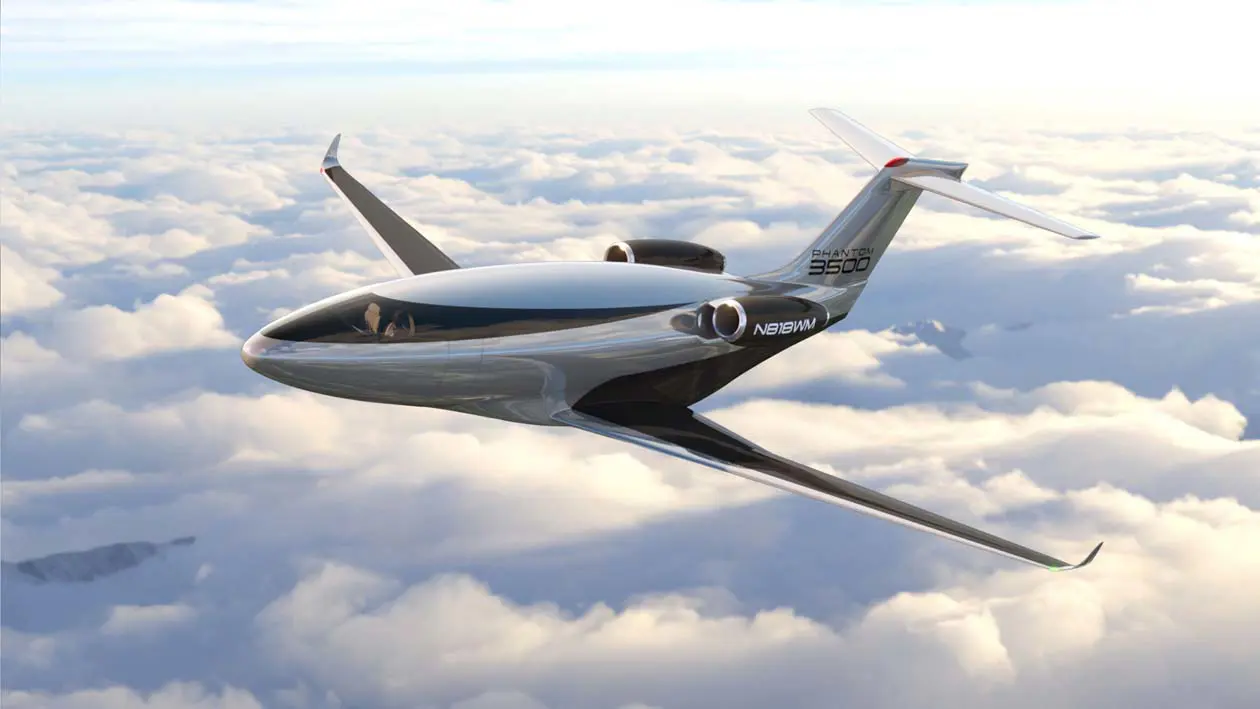
Aerodynamic efficiency and reduced fuel consumption
Made entirely of composite materials, the Phantom 3500 is designed to maximize laminar air flow, reducing aerodynamic drag by 30% and, consequently, fuel consumption. This feature, combined with an overall weight of about 19,000 pounds, allows the jet to compete with aircraft that are more than twice as heavy while ensuring transcontinental range and superior performance.
The Phantom 3500 consumes only one-third of the Jet A fuel required by a traditional jet of its class, making the use of sustainable aviation fuel (SAF) economically viable.
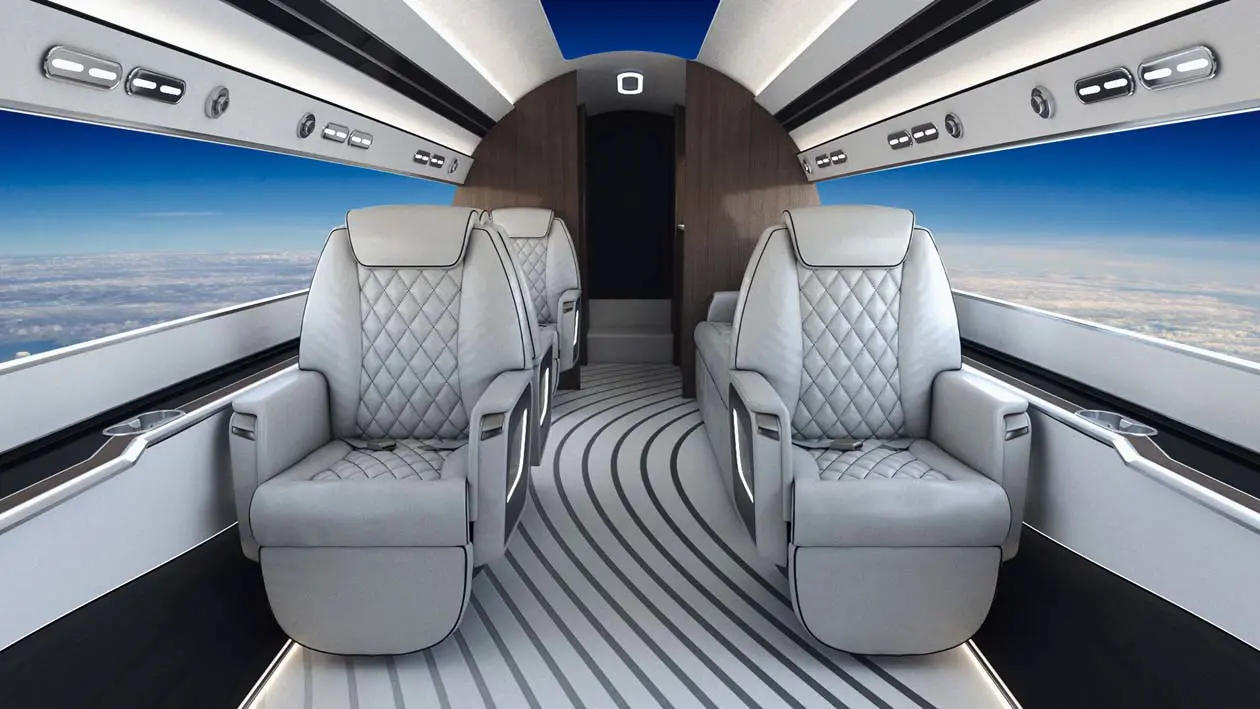
Exceptional space and comfort
The aircraft adopts an elliptical fuselage, offering an 800 cubic foot cabin in which even passengers up to 1.95 m tall can stand comfortably. It will operate at up to 51,000 feet above most commercial traffic and out of the "contrails zone", further reducing climate impact.
Proven technology and FAA certification
While introducing new solutions, Otto Aerospace has chosen to rely on already consolidated components: the Phantom 3500 will be equipped with Williams FJ44 turbofan engines (13 million flight hours in total) and Garmin avionics, ensuring reliability and simplifying the FAA certification process.
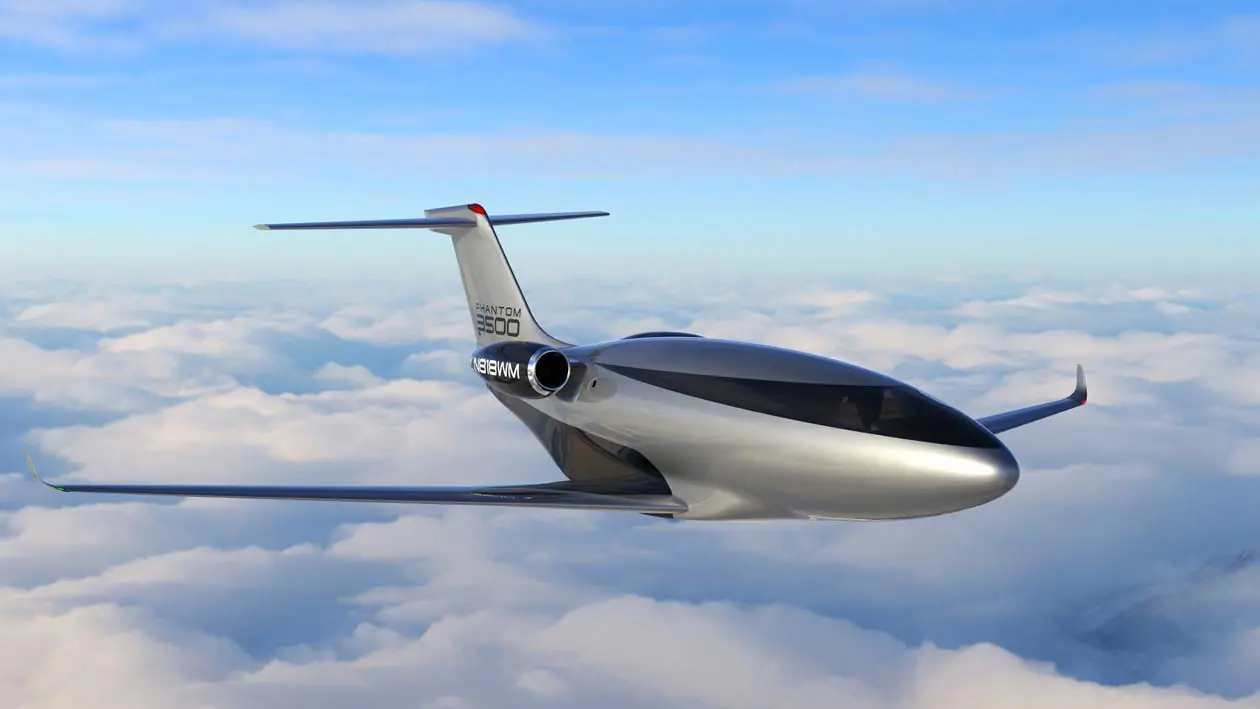
From experimentation to the revolution of flight
The Phantom 3500 evolves the previous Celera 500L project, an experimental prototype tested since 2019. From that model, Otto Aerospace inherited knowledge of laminar flow and the construction of advanced aerodynamic structures. Otto Aerospace's goal is to create an efficient, elegant and sustainable aircraft, capable of redefining the standards of business and commercial flight, guaranteeing Travellers performance and comfort, minimizing the impact on the planet. Otto Aerospace is aiming for 2027 for its maiden flight and then 2030 for entry into service, with certification and deliveries between 2030 and 2031.
By the editorial staff, Avion Luxury Magazine
Text source and photos: Otto Aerospace Press Office
Photo: Copyright © Otto Aerospace
Partnership with Villiers
Private Jets

Partnership with Booking.com / Travelpayouts
Luxury Hotel

